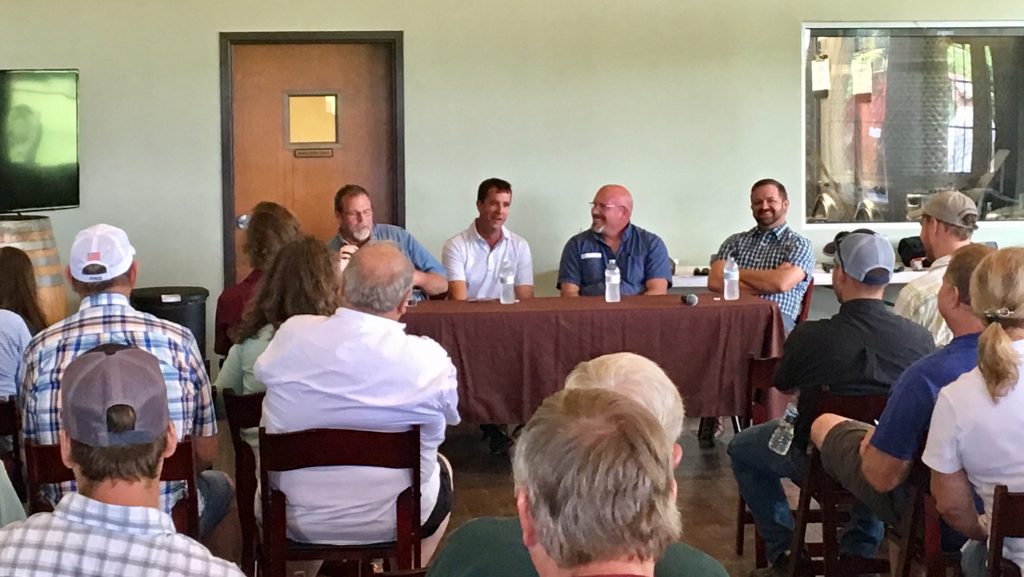Mid-Atlantic 4R Nutrient Stewardship Association formation announced
The 4R alliances are partnerships among agribusinesses, farmers, researchers, conservation organizations, and local, state, and federal agencies that encourage the application of the right fertilizers at the right time, the right rate and in the right place. This framework of nutrient management was first established by The Fertilizer Institute. The Chesapeake Bay Program has recognized this type of nutrient management as a critical foundation to successfully reducing nitrogen and phosphorus loss on farms.
“Keeping nutrients on farmers’ fields where they belong and out of our waterways is not only good for a farmer’s bottom line but good for the environment,” said Bill Angstadt, chair of the Mid-Atlantic 4R Nutrient Stewardship Association. “That’s why agribusinesses have embraced the 4R approach, because finding solutions that are good for business while improving water quality, habitat, and healthy soils will be good for the agricultural community.”
By sharing knowledge, experience, new technology and techniques, 4R partners work together to help farmers more precisely apply nutrients to feed their crops so fewer nutrients leave the farm field. Partners also promote practices at the edges of fields that trap nutrients and sediment before they can enter local waterways. The key to the success of these partnerships is finding the right set of practices that also make economic sense to farmers through costs savings and/or increased yields to make the practices sustainable. In doing so, these farmers are going beyond the bare minimum required to comply with environmental regulations and play a crucial role in addressing agriculture’s environmental impact.
Mid-Atlantic 4R will help facilitate this knowledge sharing at the regional level, which will be supported in part by a recently awarded grant from NFWF with a goal to implement practices on 335,000 acres and reduce the loss of approximately 1,500,000 pounds of nitrogen and 90,000 pounds of phosphorus to the Chesapeake Bay. The grant will fund activities such as demonstration projects for new technology and techniques, and wide-scale surveys to track implementation of practices by farmers. The source of funds to NFWF includes the Environmental Protection Agency and the Chesapeake Bay Program’s Innovative Nutrient and Sediment Reduction grants program. Matching funds are being provided by Growmark Foundation, Agrium, The Nature Conservancy and the Delaware Maryland Agribusiness Association.
The application of fertilizer is an essential part of successful crop cultivation, but when even relatively small amounts of nutrients get into local streams and rivers, they can degrade water quality, and harm rivers and bays. In the Chesapeake Bay, for example, elevated levels of nutrients cause large-scale algae blooms that block sunlight needed by oxygen-producing underwater plants and grasses, resulting in oxygen-starved dead zones and severely degraded habitat for other organisms. The recently documented resurgence of many underwater grasses in the bay has been attributed to successful, ongoing regional efforts to reduce nutrient runoff, of which efforts by local farmers and 4R alliances are an essential part.
“What makes the 4R approach so successful is that it brings a diverse range of partners together to work toward a common goal of a healthy environment and a thriving agricultural industry,” said Amy Jacobs, agriculture program director for The Nature Conservancy in Maryland. “Keeping nutrient pollution out of our waterways and the Chesapeake Bay is a goal we all have a role to play in, and the Mid-Atlantic 4R Association will help farmers, agribusiness, local agencies, and conservation organizations like The Nature Conservancy make an even larger impact.”
For more information for farmers or other potential agribusiness partners looking to join a local 4R alliance, contact Nature Conservancy Agriculture Specialist Keiller Kyle at 315-730-7454 or keiller.kyle@tnc.org.
